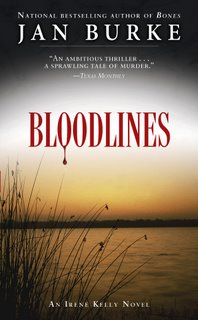Of the many areas of forensic science funding where we in the U.S. are failing to meet the needs of the public, perhaps it's time we became more concerned with -- and came to the aid of -- those who are speaking up for the dead.
It might be one of the hardest jobs for forensic science advocates: to convince decision-makers that our shameful neglect of medical examiners and coroners offices is not only hampering the investigation of crimes, but is also endangering the living and causing unnecessary suffering.
Last year, for example, NBC television affiliate KSL in Salt Lake City, Utah, ran a news report on the problems created by funding shortages in the Chief Medical Examiner's Office. "Medical Examiner: Lack of Funding Slows Work" quotes A. Richard Melton, deputy director of the state's Health Department as saying, "It's a terrible way to say it, and I shouldn't say it this way, but he's looking at dead people and many of our programs are looking at live people."
With that attitude, is it a surprise that Mr. Melton didn't make the ME's office a priority when he presented his budget to the state legislature? It's a such an insensitive and ignorant attitude, one hopes he was misquoted. If not, well -- news flash, Mr. Melton: if the dead didn't affect what happens to the living, we'd let everyone rot wherever they dropped. One would think that the cause of the ultimate lack of health would be of some concern to this guy.
To most of us, it's obvious that forensic pathologists play an important part in the criminal justice system. Other problems that may occur if an ME's office is underfunded may not be so obvious:
These are just some of the ways the living may be affected.
- Families who must wait for death certificates cannot collect insurance or deal with many other financial matters after the deaths of their loved ones. Estates may be left unsettled. This can place a tremendous burden on a family, sometimes causing a surviving spouse to lose housing, support for children, and more.
- As some counties close their ME's offices due to a lack of funding, and more and more hospitals refuse to take on the costs of non-patient autopsies, the work is farmed out to other counties and families are forced to drive many miles, the cost of transporting bodies is increased, and evidence may be lost.
- Remains of missing persons may go unidentified, leaving families to suffer for years — and crimes unsolved.
- Product safety problems may not be identified.
- Ability to respond to mass disasters may be impaired.
- Health workers may not be warned of potential threats to their safety.
- Health or safety problems in a given area may go undetected.
- Public health education may suffer. For example, the Massachusetts Medical Examiner recently warned pediatricians across the state that 31 deaths of infants in the past year have been attributed to "co-sleeping," or adults or older siblings sleeping in the same bed with an infant.
- Workers in coroners' and MEs' offices may be exposed to dangerous working conditions.
And yet, attitudes like the one expressed by an El Paso County Commissioner last summer are not as rare as one would wish. When asked about the county's delay in filling the vacated coroner's position, "Commissioner Miguel Teran told the El Paso Times on July 27 that finding a replacement for [the previous coroner] is a requirement but is not necessarily a pressing matter. 'There's only so much you can do with a dead body,' Teran said...."
There are staffing, equipment, and facilities problems affecting coroners and medical examiners across the country. In Los Angeles last month, reports of an overcrowded morgue where bodies were stacked like cordwood and infested with maggots made headlines.
Here are a few other recent stories that may interest you. (The first is one of the most comprehensive I've seen.) I'm sorry to say that I can find similar stories all across the country. Read them, then find out what the situation is in your local area. And then speak up for the dead -- and the living.
CSI Travis: Why is the Medical Examiner's Office so screwed up?, Austin (TX) Chronicle 6/30/06
Report scolds Coroner's Office, Merced (CA) Sun-Star, 6/26/06
Medical examiner ready for the worst, Bradenton (FL) Herald, 6/27/06
Pender seeks new medical examiner, Wilmington (NC) Star-News, 6/25/06
Lawmakers consider higher standards, more training for coroners, Fort Wayne (IN) Journal Gazette, 6/11/06
Almost 4 months after death, family awaits answers, South Florida Sun-Sentinel, 6/4/06
Crisis In The State Medical Examiner's Tulsa Office, KOTV, Tulsa OK, 5/24/06
Coroner Admits Overcrowding, Denies Maggot Problem, CBS2, Los Angeles CA 5/23/06
Photo by Ronnie Bergeron. (And um, yes, I know it's not a real skeleton.)









